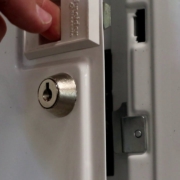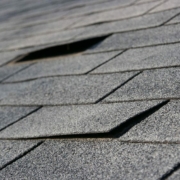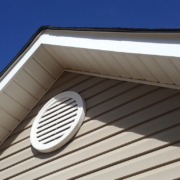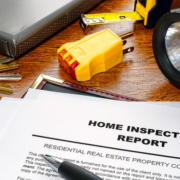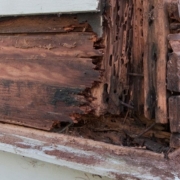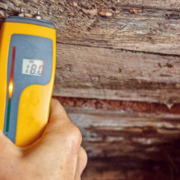When buying a mobile or manufactured home, it’s crucial to have an inspection performed just like you would for a traditional house. However, the process for a mobile home inspection is distinctly different in several key ways. Understanding what makes a mobile home inspection different can help prospective buyers make informed decisions and ensure their investment is sound.
In this blog, we will explore the unique aspects of mobile home inspections, including framing differences, hurricane ties, vapor barriers, and other vital components.
The Basics of Mobile Home Construction
Before diving into the specific elements that make a mobile home inspection different, it’s essential to understand how mobile homes differ from traditional, site-built homes. Mobile homes are factory-built and transported to their final location, either placed on a permanent foundation or left in a semi-permanent state. They are built to the HUD Code (the national building code for mobile homes), which governs their design and construction. This inherently creates differences in the construction techniques and materials used, which are the foundation of the inspection process.
Framing Differences
One of the most significant differences between mobile homes and traditional houses is the framing. In a site-built home, the framing typically consists of 2×4 or 2×6 wood studs at regular intervals. These thicker walls allow for insulation, wiring, and support for the structure’s roof and floors. However, mobile homes are designed to be lightweight and transportable, meaning they often use thinner materials, such as 2×3 or even 2×2 studs in some areas.
These lighter frames present unique challenges. For example, the thinner studs may not offer the same level of insulation or durability as traditional framing, and they may be more prone to damage from pests or moisture. Inspectors must carefully check for signs of warping, cracking, or damage to the studs. Additionally, because mobile homes are constructed off-site, there is always the possibility of structural weaknesses developing during transportation or setup. The inspector will examine how well the house has withstood the stresses of transit.
Hurricane Ties and Anchoring
Due to their lighter construction and tendency to sit above the ground, mobile homes are more vulnerable to wind and weather. This is especially true in areas prone to severe weather events like hurricanes or tornadoes. To mitigate this risk, mobile homes are often equipped with hurricane ties or anchoring systems.
Hurricane ties are metal straps or anchors that secure the home to the ground or foundation, preventing it from being uplifted or blown over in high winds. These ties are especially critical in regions where storms are frequent, and many local building codes mandate their installation. A thorough inspection will ensure that these ties are present and correctly installed.
Over time, hurricane ties can become loose or corroded, reducing their effectiveness. Inspectors will check that the ties are still securely fastened to both the home and the foundation. Missing or damaged ties can be a significant safety hazard and may require immediate repair or replacement.
Heat Tape On Water Pipes
Since the crawlspace under mobile homes is only protected from the exterior elements by thin pieces of skirting, the water service pipe can freeze in the winter months. To prevent the water pipe from freezing, the pipe must be wrapped in insulation and heat tape. Heat tape is an electrical wire wrapped around the pipe and plugged into a thermostat. This thermostat automatically turns on the heat tape when the temperature drops enough to pose a freeze hazard. During a mobile home inspection, the inspector will check for the presence of heat tape and insulation to ensure plumbing pipes are protected from freezing.
The Importance of the Vapor Barrier
The underside of a mobile home is typically exposed to the elements, making it susceptible to moisture damage. To combat this, most mobile homes have a vapor barrier installed underneath, designed to prevent moisture from seeping into the home’s foundation and causing problems like mold, rot, or structural damage.
The vapor barrier is usually made from heavy-duty plastic or similar material that covers the entire underside of the home. During a mobile home inspection, the condition of the vapor barrier is a critical focus. Any tears, holes, or gaps can allow moisture to enter, compromising the home’s structural integrity and leading to costly repairs.
During a mobile home inspection, inspectors will also check the overall condition of the home’s undercarriage, including plumbing and electrical systems, which are often routed through the crawl space beneath the mobile home. Ensuring that these systems are adequately insulated and protected is essential, as exposure to the elements can cause pipes to freeze or wiring to degrade.
Skirting
Many mobile homes are equipped with skirting, the panels or material that cover the open space between the home and the ground. While skirting is often seen as a cosmetic feature, giving the home a more finished appearance, it also serves essential practical purposes.
Skirting helps to protect the underside of the home from the elements, including wind, debris, and animals. It can also aid in energy efficiency by reducing drafts and providing some level of insulation. During a mobile home inspection, the skirting will be examined to ensure that it is in good condition, securely fastened, and free from gaps or damage that could allow pests or moisture to enter.
Mobile Home Roofs and Windows
The roof and windows of a mobile home are also areas that require special attention during an inspection. Many mobile homes have flat or gently sloped roofs, which can lead to water pooling and leaks if they are not properly maintained. Inspectors will check for signs of water damage, leaks, or worn-out roofing materials that may need replacement.
Similarly, mobile home windows can be a source of heat loss or moisture intrusion. Inspectors will check the condition of the window seals, frames, and glass to ensure they are properly sealed and functioning.
Final Thoughts
While mobile homes offer affordable and flexible housing options, they come with their own set of unique challenges. A comprehensive inspection tailored to the specific construction and maintenance needs of mobile homes is crucial to ensuring the home is safe, durable, and worth the investment.
From framing differences to hurricane ties, vapor barriers, and more, every component plays a role in the overall health and safety of a mobile home. By understanding these critical areas, buyers can make more informed decisions and address any potential issues before they become costly problems down the road.
Whether you’re buying a mobile home for the first time or are a seasoned homeowner, investing in a detailed inspection can save you from future headaches and unexpected expenses.

